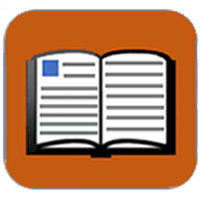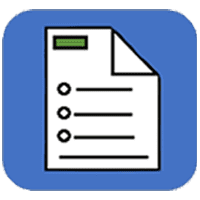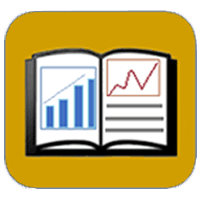Decision Support
View article.
Across all cases, actors spanned boundaries to perform functions including: (1) convening meetings and agreements; (2) implementing projects; (3) community outreach; (4) funding support; (5) project planning; (6) scientific expertise. These functions fostered conducive boundary settings, concepts and objects to communicate and work across boundaries, navigating challenges to implementing work on the ground. This work highlights context-specific ways to advance cross-boundary wildfire risk reduction efforts and uses a boundary spanning lens to illustrate how collective action in wildfire management evolves in different settings. This research highlights prescribed fire as a gateway for future collective action on wildfire risk, including managing naturally ignited wildfires for resource benefits and improving coordination during wildfire suppression efforts.
View article.
Through a literature review and collaborative thematic coding of a large set of ethical dilemmas, a list of ethical lenses was developed. Five ethical lenses were generated from the thematic coding process: Epistemologies and Representation, Values and Priorities, Risk and Uncertainty, Power, and Metaethics. The five lenses provide a framework to identify prospective ethical tensions in wildland fire decision-making, both within and cutting across categories. This framework provides a way of structuring future investigations into wildfire ethics, as well as a starting point for developing techniques to integrate community and stakeholder values.
View article.
We organize our exploration of new horizons around three key areas, suggesting that PODs can enable climate-smart forest and fire management and planning, inform more agile and adaptive allocation of suppression resources, and enable risk-informed performance measurement. These efforts can be synergistic and self-reinforcing, and we argue that expanded application of PODs at local levels could enhance the performance of the broader wildland fire system. We provide rationales for each problem area and offer growth opportunities with attendant explanations and illustrations.
View factsheet.
Assessing the geomorphic sensitivity of streams and the ecological resilience of riparian ecosystems provides the basis for understanding how they have responded to disturbances and management actions and how they are expected to respond in the future.
A collaborative group of managers and scientists led by Jeanne Chambers, research ecologist and senior scientist (emeritus) with the USDA Forest Service Rocky Mountain Research Station, and geomorphologist Jerry Miller, a professor of environmental science at Western Carolina University, developed a multiscale approach to help land managers rapidly assess watersheds and categorize them based on resilience and sensitivity to disturbance. The project was built on the long-term work of Chambers and her collaborators on Great Basin riparian ecosystems.
View article.
Transboundary risk requires collaborative governance that attends to the distribution of power, authority, and capacity across the range of actors relevant to particular fire-prone landscapes. Wildfire is also changing in unprecedented ways and multiple, interacting uncertainties make predicting future wildfires difficult. Anticipatory governance can build our capacity to integrate uncertainty into wildfire decision-making and manage risk in proactive ways. Finally, competing interests and values mean that trade-offs are inherent to the wildfire problem. Risk governance links science and society through deliberative, participatory processes that explicitly navigate tradeoffs and build legitimacy for actions to address wildfire risk. Governance approaches that better target the nature of the wildfire problem will improve our ability to coexist with fire today and in the future.
View article.
Study findings revealed that consistent treatment maintenance, the culture of communication about treatments, local expert knowledge, and unit/team composition are important components of how fuel treatments are evaluated and integrated during incident response.
View article.
In this paper, we seek to address this question based on interviews with leaders engaged in the management of jurisdictionally complex wildfire incidents. We propose a multi-level framework for conceiving co-management as strategic efforts of individual actors to cooperatively manage perceived interdependencies with others through one or more formal or informal institutional arrangements. We then demonstrate the value of the proposed framework in its ability to organize a series of questions for diagnosing co-management situations within the context of jurisdictionally complex wildfires.
View article.
The most stressed recommendation was that “getting the people part right” should be the priority consideration when setting up a CAM project. Actively engaging with communities from the very start is essential for developing practical solutions. Communities need to view the project as being consistent with community values and benefitting those communities. Supporting people with leadership qualities who are passionately supportive of the project is important for converting plans to action. Relationship- and capacity-building efforts that encourage productive interactions are essential for developing working relationships that enable implementation and long-term cooperation. Projects should be structured to take advantage of partners’ particular strengths and available resources; effective and timely actions are achieved most easily at smaller scales but need to be coordinated within the context of larger issues. Great value can be obtained by simply moving away from formal implementation of AM toward actions to improve the management system’s capacity to achieve success. Additional studies of smaller scale projects could provide useful information about effective approaches to capacity building.
View articles.
A new Special Section in the journal BioScience provides an in-depth exposition of the Resist-Accept-Direct framework, a new approach to guide natural resource decision making. Articles in the Special Section explore the practical application of the framework, compatibility of existing tools, social barriers and opportunities, and future science needs.
View technical note.
The threat-based model approach uses simplified ecosystem models to identify and map primary threats and determine potential management interventions. The study team found that the threat-based model supported the findings from the BLM’s land health evaluation for the O’Keeffe allotment. The threat-based model approach offered another line of evidence in assessing upland standards. It also proved to be a valuable tool for communicating with stakeholders, as it provided a spatial depiction of habitat condition and threats through maps and a framework to link threats to management actions. The BLM needs to further apply and study this methodology, but there is potential to use the threat-based model to streamline the land health evaluation process and provide a consistent assessment framework across public and private lands.




